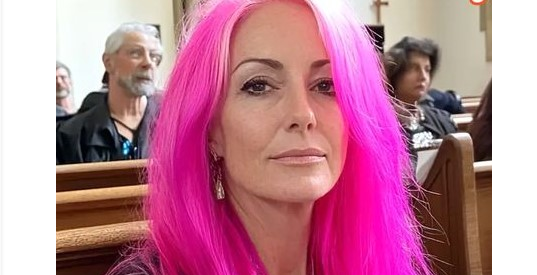This past Sunday started like any other—an ordinary day at church meant for quiet reflection and connection. But as I settled into the pew, something unusual caught my eye and left me unsettled: a woman near the front sporting bright pink hair.
I’ll admit, I was taken aback.
We live in a world that encourages individuality and self-expression, and I respect that. Still, I couldn’t shake the feeling that this bold look seemed out of place in a sacred setting.
To me, church has always represented modesty and reverence, a space removed from bold fashion statements. As the preacher began his sermon, I struggled to focus, my thoughts circling back to that vivid neon pink.
Why Do We Hold Certain Expectations in Sacred Spaces?
Growing up, attending church meant dressing conservatively—muted tones, simple attire, and an air of humility were the norm. For me, this was about more than appearances; it was a way to show respect for a place set apart for reflection and worship.
So, I found myself wondering: is it outdated to think that bright pink hair might not be appropriate for church?
Sacred spaces often bring unspoken expectations to the forefront. They’re places of tradition, and for many, that tradition includes a sense of decorum. But with the world’s evolving attitudes toward self-expression, do these old norms still hold significance?
An Unexpected Conversation
After the service, I saw the woman with pink hair chatting outside. Gathering my courage, I approached her and gently said, “Excuse me, I couldn’t help but notice your hair. I just wanted to share my thoughts—bright colors like that might feel a little out of place in church.”
Her response was immediate and direct: “Well, I don’t think it’s any of your business,” she said with a small, tight smile. “I come to church to pray, not to be judged on my appearance.”
Her words left me speechless. I hadn’t intended to make her feel unwelcome or spark an argument. I thought I was simply sharing my perspective. Yet, her response made me question whether I had overstepped.
Rethinking Respect and Tradition
This encounter forced me to examine my beliefs. I’ve always thought that church attire should reflect respect for the space—a place for humility and connection, not self-expression through bold choices.
Yet, I began to wonder: is my perspective outdated? As society becomes more inclusive and individualistic, perhaps our ideas about what constitutes respect in sacred spaces are evolving.
Still, I can’t help but feel something is being lost. Aren’t sacred spaces meant to be different from everyday environments? Shouldn’t there be a unique standard of decorum for places symbolizing something greater than ourselves?
A Shift in Church Dress Codes
Dressing modestly for church has been a cultural norm for centuries. It’s long been a way to honor the sanctity of the space. But times are changing, and many churches now emphasize a “come as you are” philosophy.
Hairstyles, colors, and clothing choices that once seemed radical are becoming more accepted—even in churches. But does this mean all traditions should fade away? Or can we strike a balance between respecting individuality and preserving the sanctity of sacred spaces?
A Lesson in Acceptance
Reflecting on this experience, I’ve realized that while traditions have value, they shouldn’t come at the cost of making others feel unwelcome. If someone feels comfortable expressing themselves through bright pink hair, isn’t their presence in church more important than their appearance?
Ultimately, the heart of church lies in its purpose: prayer, reflection, and community. Focusing too much on external appearances risks missing the bigger picture.
I’m learning to approach situations like this with an open heart, recognizing that respect can take many forms—not just through clothing or hair color, but in how we treat one another.
Tradition Meets Modernity: Finding Balance
Striking a balance between tradition and modernity is challenging, but it’s possible. Respecting sacred spaces doesn’t have to mean clinging to rigid expectations. Perhaps it means valuing the actions and intentions of those present more than their appearance.
In the grand scheme, things like pink hair matter far less than the respect we show for each other’s faith journeys. If churches can embrace a more inclusive approach, they may even build deeper connections with younger generations seeking meaning in their own way.
Conclusion: A New Perspective
This experience has taught me that reverence is evolving. While I still believe in preserving some traditional values, I now see the importance of welcoming change. If someone’s hair color or outfit challenges my expectations, I hope to respond with understanding rather than judgment.
What do you think? Is there still a place for traditional standards in churches, or should we fully embrace individuality? Let’s continue the conversation and explore what respect and reverence look like in today’s world.






